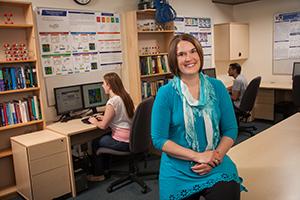PUBlic Professor Series | DNA Damage, Repair and Disease: How Computers Can Help Us Understand
Event Location: City Hall, City of Lethbridge (910 4th Avenue S, Lethbridge)
Light appetizers and a cash bar will be available.

DNA Damage, Repair and Disease: How Computers Can Help Us Understand.
Our DNA contains genetic instructions for our body to grow, develop, and function. However, these instructions in our DNA can be damaged by exposure to external and internal influences such as UV light, medical X-rays, environmental pollutants, and hormones. It has been estimated that there are more than 20 000 damaged DNA sites per typical human cell at any time. Although enzymes in our cells can repair much of this damage, some damage persists and has significant health effects, including aging, cancer, inflammatory diseases, and autoimmune disorders. In order to combat these health consequences, the molecular-level details of the chemical reactions that damage and repair DNA in our cells must be understood.
Although DNA damage and repair is a complicated process, computer calculations can provide the information required to complement traditional experimental work focused on unraveling the connection between DNA damage and disease. Indeed, highly accurate computer calculations can serve as powerful predictors of experimental outcomes, clarify discrepancies between experimental hypotheses and results, and provide information not available from traditional ‘wet’ experiments. I will discuss how state-of-the-art computer hardware and software can be used as a first step to map the relationships between DNA damage, repair and disease.
Sponsored by:

